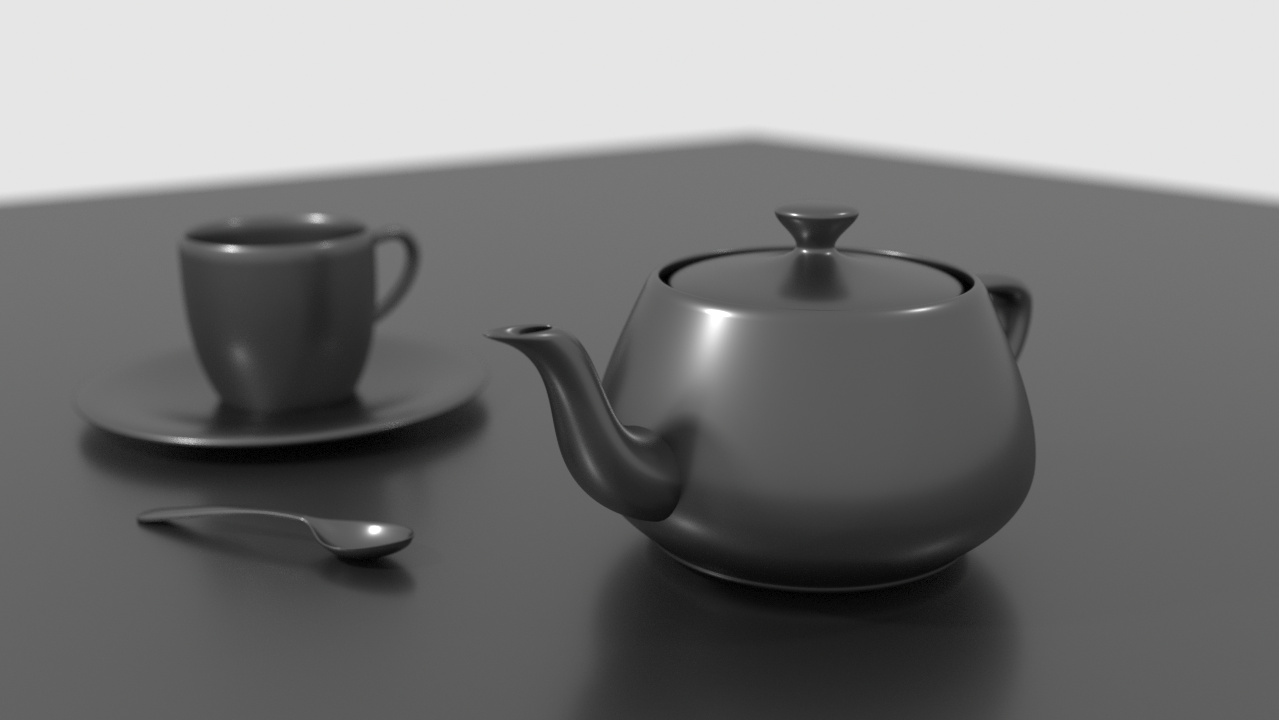So, I've fixed the obvious bug in the glossy BRDF from my last post.

The bug was in the fresnel calculation. I was doing a dot product with one of the vectors unormalized, when it was supposed to be normalized. This caused the dot product to be greater than one in some areas, which made the result of the whole equation negative when taken together. Fun!
The glossy BRDF still isn't 100% there yet. I'm still struggling to figure out what I'm doing wrong with one part of the equation (for now I'm just leaving that part out, and it still looks believable—when I include it, things explode with brightness, so I must be doing something wrong). But that will be for another post.
But still! Looks cool!
Now that I have it more-or-less working, I want to talk briefly about what makes this particular glossy BRDF cool.
As I mentioned before, this BRDF uses the GTR (or Generalized Trowbridge-Reitz) microfacet distribution. Like most glossy BRDF's, it has a parameter for how blurry the reflections are. But unlike most glossy BRDF's, it also has a parameter for the shape of the blurriness. And when I say "shape" I don't mean like stars or squares or circles. Rather, I mean this:

This image has exactly the same parameters as the one above, except for the shape parameter. Notice that the blurry reflections are still about the same blurriness, and the central hot-spots of the highlights are still roughly the same size (give or take), they just have a wider trailing blur around them. Basically, the shape parameter makes the reflection more or less "foggy".
It's really cool, because it lets you convincingly achieve a much wider range of materials. Incidentally, when the shape parameter is set to 2.0, the BRDF is identical to GGX.
